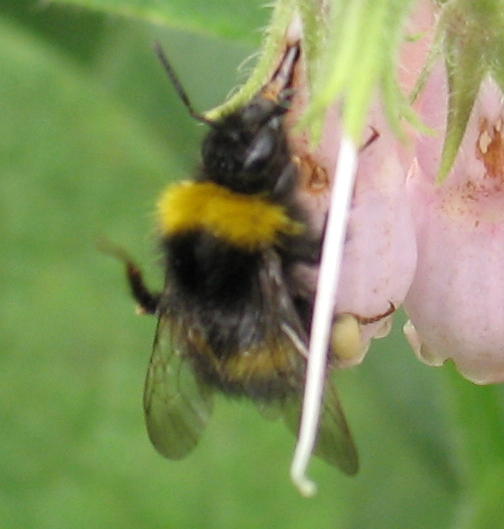Back To

Length Queen 15-17 mm, Workers 10-14 mm, Male 11-13 mm.
Description
Aually present on the 2nd tergite in queens and males, but is often barely discernible in workers. Males have notable yellow-haired faces and broad yellow collars.The tail is strikingly orange. Castes are relatively small and fluffy compared with other bumblebees, never with the elongate build of the similar male lapidarius (also possess red tail and bright yellow collar) and never with the extensive red abdomen of B. monticola, which has a similiar build.he workers and the males are a little smaller than those of the Common Carder Bee. Size colour and phenology make this bee one of the more identifiable. Worn specimens can be a littele more difficult
Phenology March onwards.An early species . Identification by the combination of an orange tail and a bright yellow collar. A yellow band is us
Habitat
B. pratorum found in avariety of habitats, but tends to avoid the most open or exposed locations, and is usually most abundant where brambles and other rosaceous shrubs are present.Spring Queens are the first to appear feeding on a mix of spring flowering shrubs and flowers Eg dead-nettles, Ground-ivy, dandelions Workers and malesappear by April nectaring on the Roaseace Eg brambles, Raspberry, also currants, comfreys, a variety of lamiates and scabiouses. Nectar-stealing (biting through corolla tubes of deeper flowers like comfreys to obtain nectar) is common in this species Males tend to visit the same flowers. Early establishing of a colony normally allows a second generation using queens produced by the first generation. This means that is often one of the last bumblebees to disappear in autumn.




